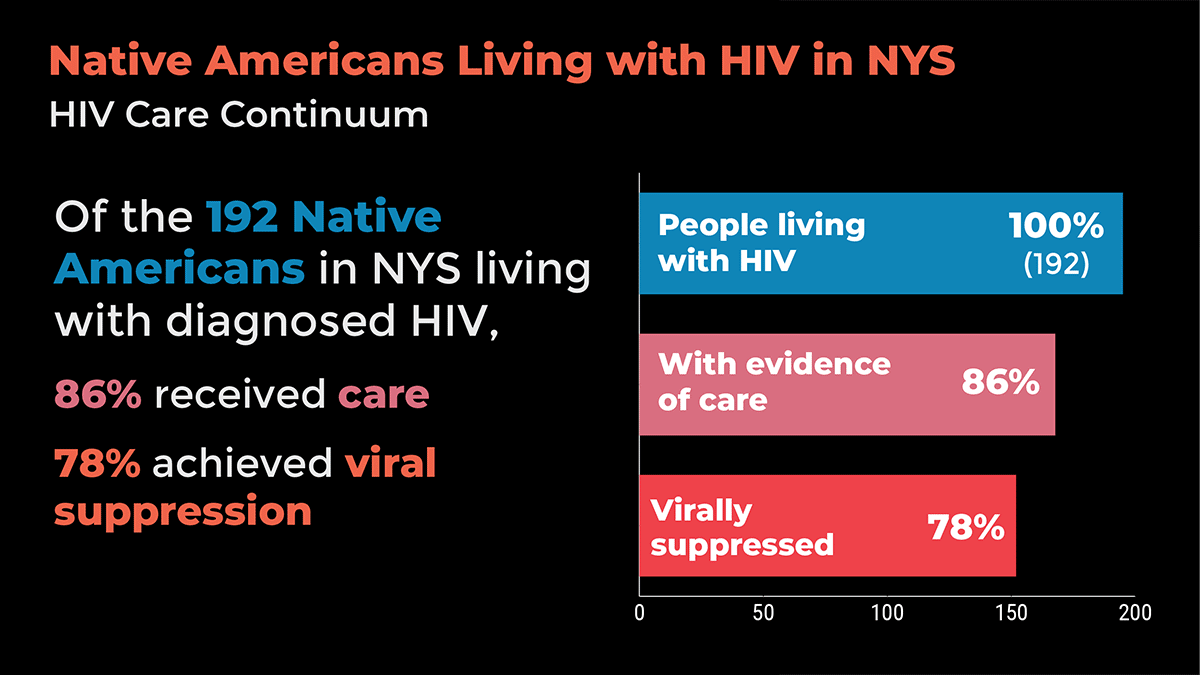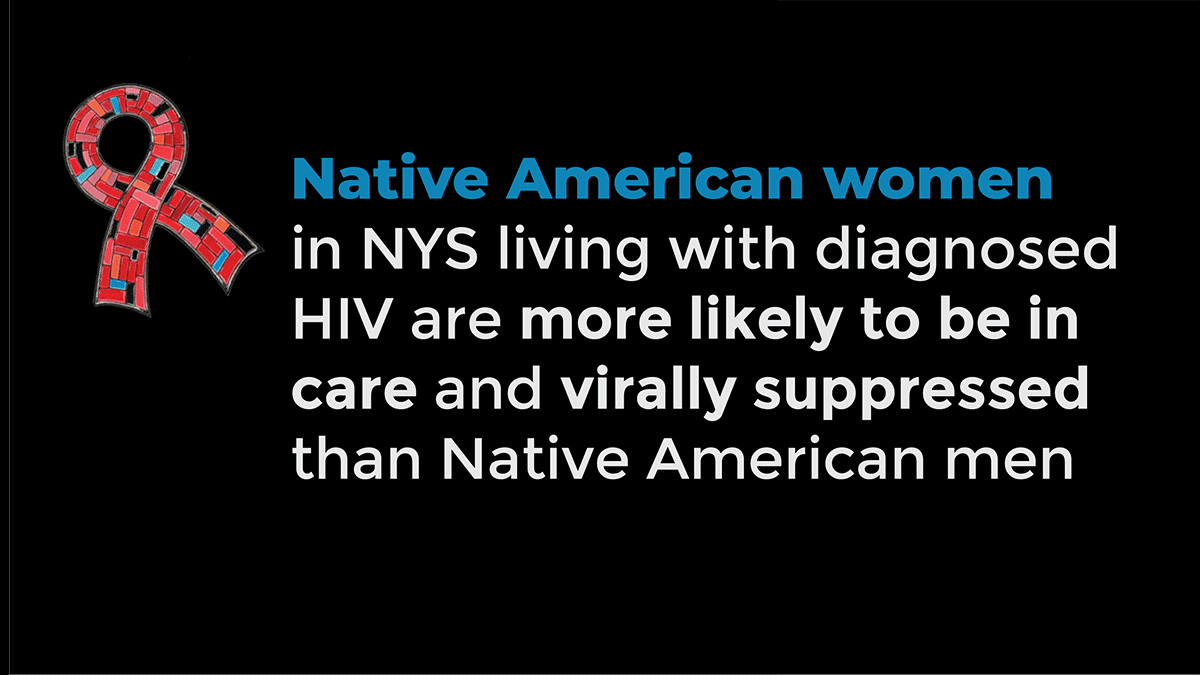National Native HIV/AIDS Awareness Day 2024
National Native HIV/AIDS Awareness Day is a day to raise awareness for the Native American and Indigenous communities in the United States that have been disproportionately impacted by HIV/AIDS for decades. This year’s theme is "It’s All Relative, Our Experience Makes a Difference."
In 2022, a total of 192 Native Americans residing in New York State (NYS) were living with diagnosed HIV. Among them, 73% are male, 53% of the total are men who have sex with men.1 Of the 192 Native Americans in NYS living with diagnosed HIV in 2022, 86% had evidence of care, and 78% were virally suppressed. Native American women living with diagnosed HIV are more likely to be in care and virally suppressed than Native American men. Women accounted for 56 of these cases, with 89% having evidence of care and 89% achieving viral suppression. Of the 136 Native American men living with HIV, 84% had evidence of care and 83% achieved viral suppression. Explore HIV care outcomes for Native American New Yorkers

In 2022, 107 Native Americans in NYS received PrEP under Medicaid coverage, representing a significant increase from 2015 when only 20 individuals were prescribed PrEP. Although PrEP use has risen, numbers remain low overall. Explore PrEP use data here.

A key limitation
Historically, there is evidence that HIV surveillance data undercounts the number of Native American individuals living with diagnosed HIV. As described in the Native American ETE Advisory Group Implementation Strategies report, this has largely been due to widespread racial and ethnic misclassification of Native Americans. The misclassification of cases results in an underrepresentation of Native Americans in HIV statistics. Sovereignty issues also play a role, as some Native nations gather HIV data but may choose not to share it with New York State due to data-sharing agreements. Furthermore, social determinants such as the availability of culturally sensitive services contribute to health disparities. Stigma and privacy concerns also deter individuals from seeking HIV testing and treatment. This underreporting is critical because it can lead to insufficient funding for targeted interventions and services, and it obscures the true extent of health issues and disparities affecting Native communities. Recent estimates suggest that the actual number of Native Americans living with HIV could be 2-5 times higher than the current reported figures2. This underestimation reduces the reliability of estimates for measures such as HIV testing rates among Native Americans in NYS.
On National Native American HIV/AIDS Awareness Day, explore data on the ETE Dashboard to stay informed on the latest trends in the HIV/AIDS epidemic in New York State.
Sources:
1. NYS HIV Surveillance System, 2022.
2. Native American ETE Advisory Group Implementation Strategies report
